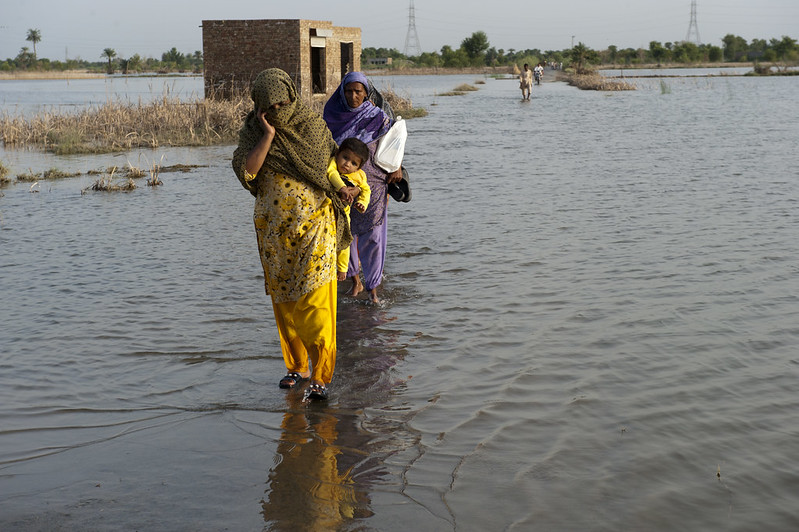
The floods ravaging Pakistan are devastating – especially for the nation’s women.
In all, about 33 million people in the nation have been impacted by the ongoing storms, U.N. officials say, and roughly 8.2 million of them are women of childbearing age. The United Nations Population Fund estimates that at least 650,000 pregnant Pakistani women currently need prenatal care, and an estimated 73,000 are expected to give birth in the next month.
“Pregnancies and childbirth can’t wait for emergencies or natural disasters to be over. This is when a woman and baby are vulnerable and need the most care,” the fund’s Pakistan representative, Dr. Bakhtior Kadirov, said in a release. Over 1,000 health facilities and countless roads and bridges have been damaged, officials also note, compounding the matter.
In addition, UNFPA officials say the resulting homelessness caused by storm damage has put women and girls at increased risk of suffering gender-based violence, from assault to rape.
It’s an alarming aspect of an already-dire situation. Monsoon season in Pakistan – which lasts for much of the summer – traditionally involves heavy flooding. But this year has been especially catastrophic, due to climate change and the rising global temperatures that come with it. The phenomenon is negatively impacting the South Asian nation in two ways: via more severe storms, and rapidly melting glaciers.
For example, there has been 780% more rainfall this year than usual – that’s not a typo. “This year, Pakistan has received the highest rainfall in at least three decades,” Abid Qaiyum Suleri, executive director of the Sustainable Development Policy Institute, told the Associated Press. “Extreme weather patterns are turning more frequent … and Pakistan is not an exception.”
Added Sherry Rehman, Pakistan’s climate minister, to the AP: “We have the largest number of glaciers outside the polar region, and … instead of keeping their majesty and preserving them for posterity and nature, we are seeing them melt.”
As a result, roughly one third of Pakistan is now underwater, creating a “crisis of unimaginable proportions,” Rehman told the BBC. On top of the destruction, over a thousand people have died, and hundreds of thousands are stranded.
It’s an especially gutting situation because, while Pakistan is uniquely susceptible to the effects of climate change due to its location and topography, it’s also responsible for less than 1% of the world’s carbon emissions.
Pakistani leaders, in tandem with the U.N., have requested emergency aid amid the ongoing disaster – which comes as the country simultaneously grapples with an economic crisis that has left 230 million citizens battling food insecurity, inflation and more, well before the flooding.
Officials are also calling upon the world to recognize the devastation that comes with climate change. “Let’s stop sleepwalking toward the destruction of our planet by climate change,” U.N. Secretary-General Antonio Gutteres said in a videotaped appeal for funding, per CBS News.
He added, “Today, it’s Pakistan. Tomorrow, it could be your country.”



